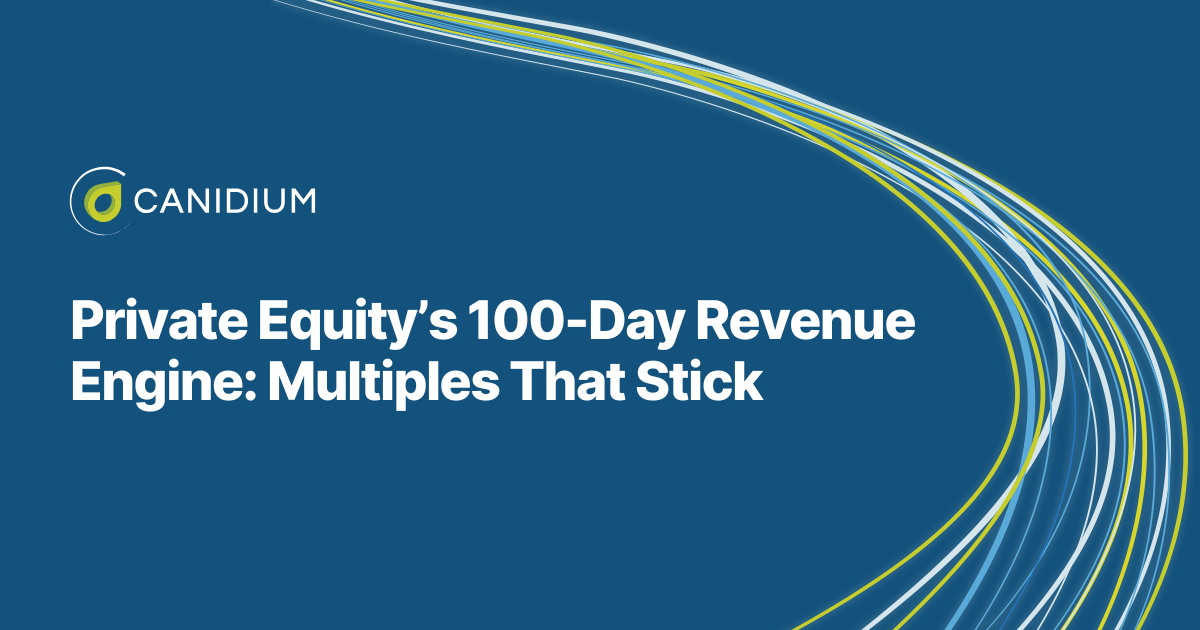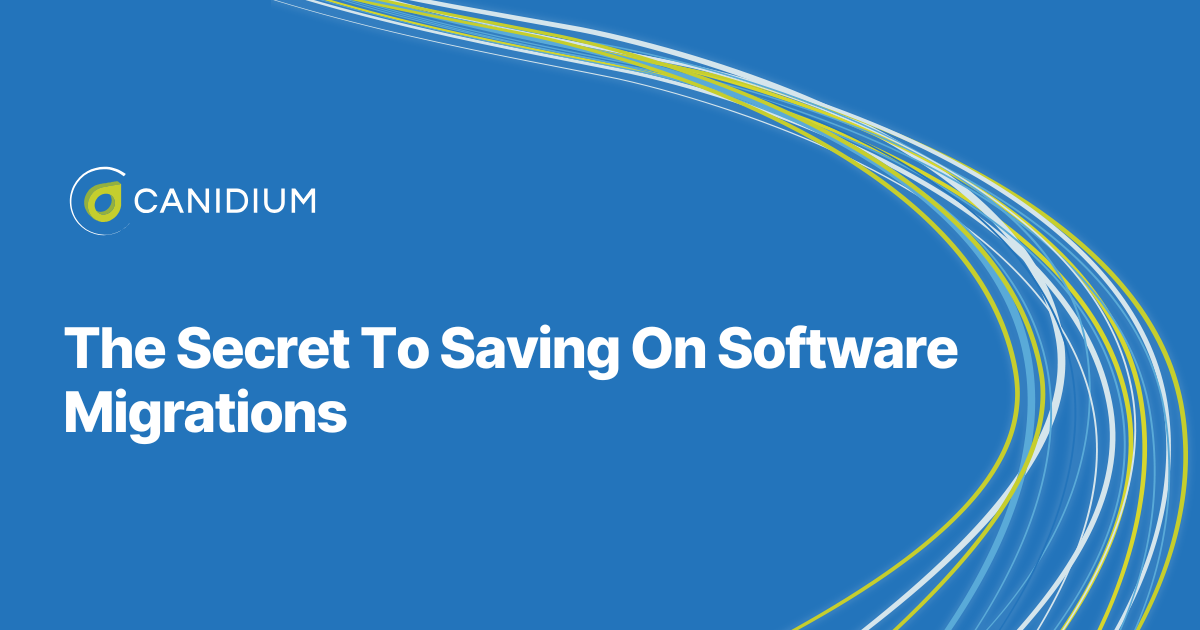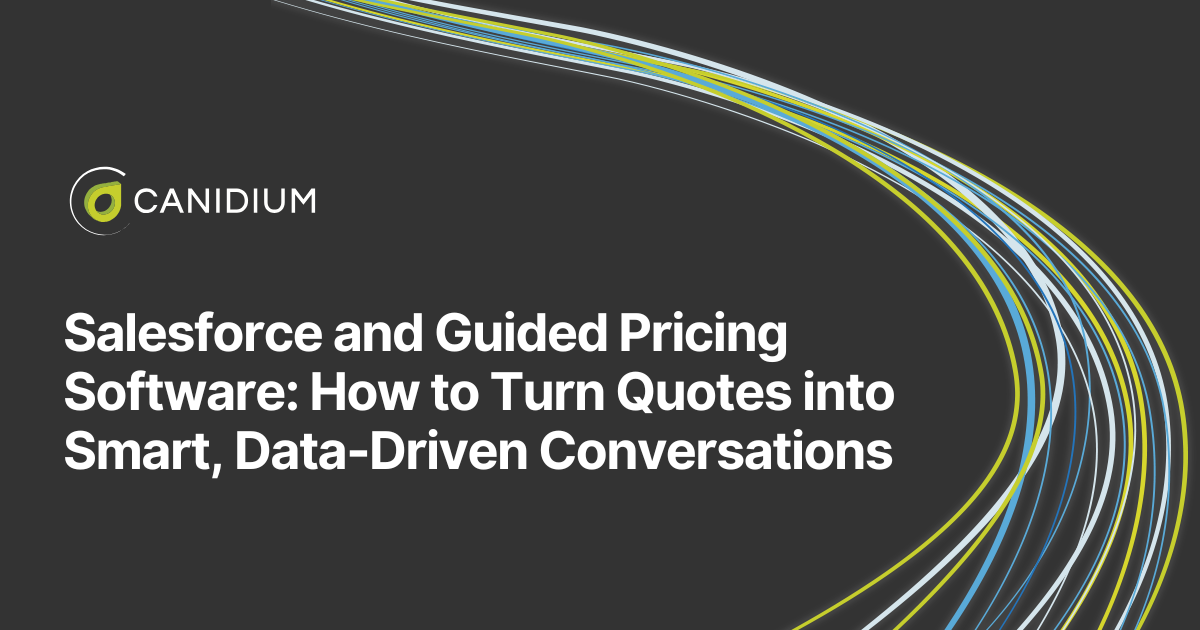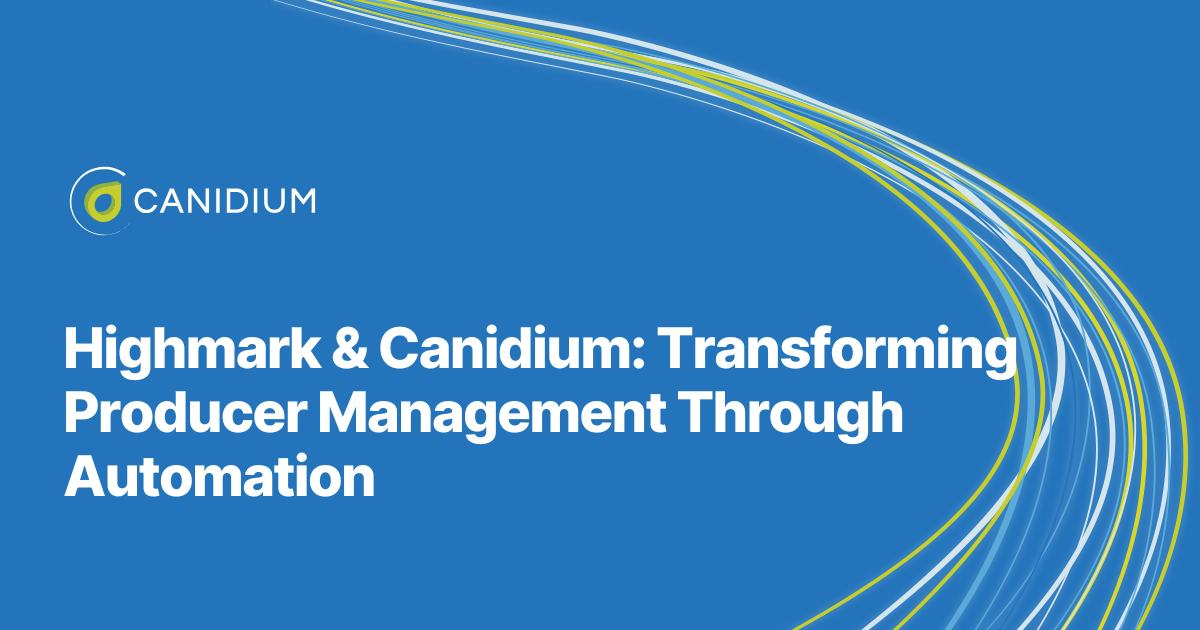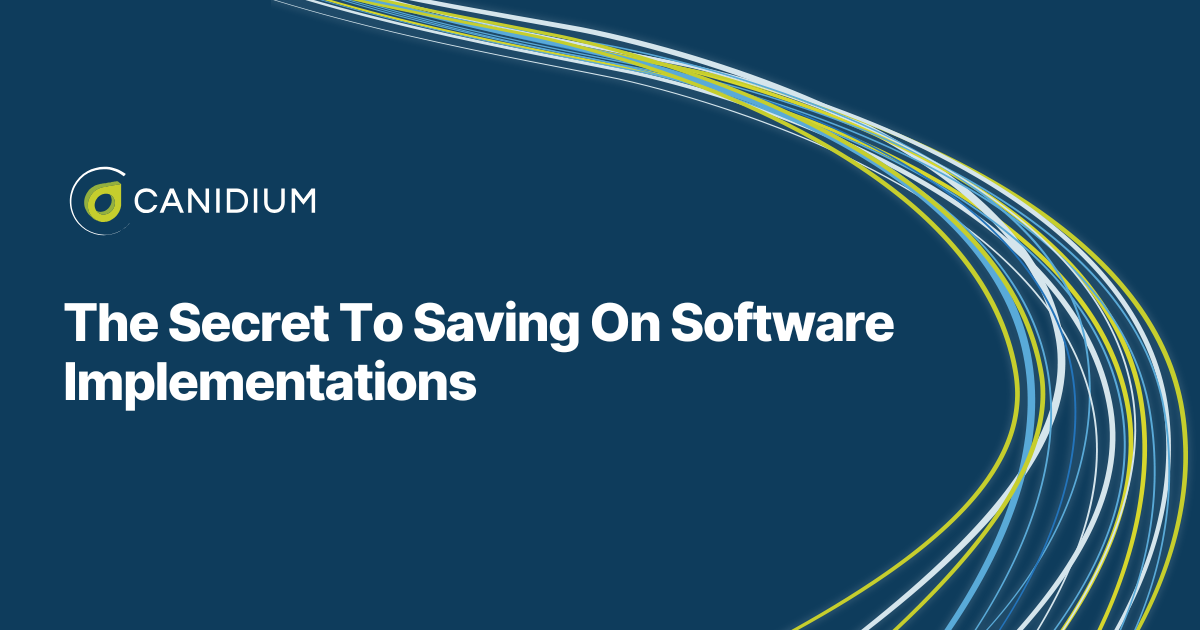Private equity firms don’t have decades; they’re on a tight schedule. Three to five years, maybe less. That’s all the time you get to turn a company with potential into a company that commands a premium multiple. Every quarter counts.
That’s why the best PE operators don’t rely on a single silver bullet. They stack revenue levers—such as pricing, Salesforce, CPQ, SPM/ICM, incentives, and managed services—into a single, coordinated system. At Canidium, we call that approach Integrated Revenue Optimization (IRO).
IRO is a holistic, rapid-fire approach to rev ops that delivers notable growth within a PE firm's timeline. It’s about measurable changes that show up in EBITDA, tighten operational discipline, and give buyers something real to underwrite. Here’s how:
Establishing Speed, Discipline, and Proof: The 100-Day Value Creation Operating Rhythm
Imagine a portfolio company you’ve just acquired: it has a good product in a solid market but messy revenue operations. Discounts are negotiated in spreadsheets, the CRM is half-adopted, commissions are opaque, and pricing changes take weeks.
That company doesn’t need a three-year transformation plan. It needs a 100-day operating rhythm that establishes control, focuses on value creation, shows lift, and creates a foundation to scale.
That’s where IRO comes in. It connects pricing decisions to quoting behavior, quoting behavior to compensation, and compensation back to margin goals. It replaces heroics with repeatable systems, the kind that make investors confident and buyers willing to pay more.
Pricing: Where Every Dollar Drops to EBITDA
Let’s start with the fastest lever in the private equity industry: pricing.
Most cost-cutting measures (e.g., reducing raw material costs, headcount, or overhead) affect only a much smaller share of the total P&L and often involve trade-offs, such as hurting capacity or quality. But price improvements, even tiny ones, flow directly to the bottom line. That’s why pricing is often considered the fastest way to improve EBITDA in a short time frame.
Take a portfolio manufacturer selling $500 million annually. A 1% price increase (if volume holds) can drive an 8% increase in operating profit. This generates an additional $5 million in direct profits.
Regardless of who you have in your pricing department, you can’t fully optimize pricing if it lives in an Excel file. Modern pricing platforms let portfolio companies push real-time price guidance to the frontline, model financial impact before rolling out changes, and harmonize discounts across business units after a roll-up. Moreover, automations free up the pricing department's time to focus on strategic revenue generation under difficult market conditions; as a result, your overhead delivers more value rather than simply covering hours spent on repetitive, time-consuming spreadsheet management.
The result: fewer rogue deals, shorter approval cycles, greater market share, higher enterprise value, and a margin story that actually sticks during diligence.
Salesforce as the Revenue Command Center
Pricing only matters if your sales team follows it. That’s why IRO embeds pricing logic directly inside Salesforce, the platform a significant number of private equity portfolio companies already use.
Instead of forcing reps to toggle between systems, we surface target pricing, floors, and approval logic right where they work. A sales manager at a packaging company, for example, doesn’t have to call Finance for a “deal exception” anymore. They see the margin impact instantly, make a data-backed decision, and move on to other growth initiatives.
The long-term value isn’t just speed. It’s visibility. Investors get clear and proven value creation playbooks through cleaner forecasts, less noise, and a single source of truth that doesn’t fall apart during due diligence.
Most portfolio companies aren’t using all of their Sales Cloud features. Salesforce releases three feature updates each year, each carrying targeted tools to improve the platform's efficacy. If your portfolio companies are Salesforce Sales Cloud users, they are already entitled to use these new features.
CPQ: Quoting Without Chaos
Fast deals are good deals, but only if they’re accurate, disciplined, and scalable. In many portfolio companies, quoting is one of the biggest sources of hidden revenue leakage.
Think about what happens without guardrails: a rep in Chicago gives a 15% discount because “it’s what the customer expected.” Meanwhile, a rep in Dallas quotes a slightly different bundle at a different price, and the approvals ping-pong between sales, finance, and product marketing for three weeks. By the time the deal closes, the margin is thinner than planned, the customer is confused, and the operations team is stuck cleaning up a messy order, limiting your investment returns and setting back operational value creation.
That’s what a lack of CPQ discipline looks like.
Now imagine the opposite:
A rep opens their quoting tool to configure a complex, multi-region bundle. Instead of manually checking pricing spreadsheets, the system automatically applies the correct pricing logic, discount limits, and regional rules.
If they try to apply a discount that exceeds policy, the system prompts them to provide justification or routes it to the right approver in real time. There’s no email chain, no spreadsheet version control, no waiting for Finance to weigh in a week later. Approvals happen in hours, not days.
Once the quote is finalized, the order flows straight into the ERP without manual re-entry, eliminating a huge source of downstream errors and delays and providing direct return on investment.
Incentives and Commissions: Turning Behavior into Value Creation
Research indicates that well-designed incentive compensation plans produce a 112.5% ROI—increasing productivity by 18%. In simple terms, well-run incentives and commissions programs give sales teams a reason to outperform their current metrics, generate greater enterprise value, and foster market expansion.
Moreover, price discipline and top-line growth can evaporate if commissions don’t reinforce it. Incentives are how you get reps to protect margins without constant policing. With incentive tools like SAP SuccessFactors Incentive Management and Xactly Incent, we’ve helped PE-backed companies shift comp plans toward high-margin products, attach rates, and disciplined discounting.
Picture two reps facing the same deal. One sees a bonus tied to margin protection, the other doesn’t. Who’s more likely to cave on price? Aligning incentives to the investment thesis turns pricing strategy into frontline behavior.
Or...
Strategic Consulting, PE Enterprise, and Health Checks: Know Before You Scale
Every private equity deal comes with a story. The glossy side of that story lives in the CRM—clean revenue numbers, promising projections, and growth potential. But behind the scenes, portfolio companies often carry years of technical debt and operational complexity.
It’s not uncommon to inherit a tech stack with legacy pricing logic, spaghetti-like integrations, multiple CRM instances, and compensation rules held together with duct tape and spreadsheets. Each of those issues may seem small in isolation, but together they create drag, the kind that quietly erodes EBITDA, hinders value creation, and slows everything down.
That’s why, in terms of cost savings, it’s ideal to begin with a targeted strategic and technical health check before scaling. It’s about understanding what you actually own, what’s holding you back, and where the most financial leverage for investment returns live.
Seeing the Whole Revenue Engine
Our value creation team examines your entire commercial stack through the lens of financial engineering your exit thesis:
- How your pricing is structured and whether it’s enforceable in the field.
- How your CPQ system handles complexity, discounting, and approvals.
- How well your Salesforce Sales Cloud instance supports clean pipeline visibility and forecasting.
- How your incentive and commission logic (e.g., SAP SuccessFactors Incentive Management, Xactly Incent) aligns with your value creation plan.
- How your data flows (or doesn’t) between systems.
Our value creation team doesn't just produce a laundry list of problems; we map these findings directly against your investment goals and market conditions: Are you trying to expand margin? Accelerate revenue velocity? Harmonize after a roll-up? That context shapes our action plan.
Operational Improvement: Revenue Growth From Discovery to Playbook
Once we’ve taken the engine apart, we put it back together with a sequenced roadmap that prioritizes:
- Quick wins — things that can be fixed in 30–60 days to show immediate lift.
- Critical fixes — issues that must be addressed before scaling, integration, or M&A.
- Scalable plays — foundational moves that enable sustainable operational improvements across multiple business units.
Why Private Equity Fund Leaders Opt for Technical Health Checks
In a compressed 3–5 year hold period, every move must either create enterprise value or protect it. Health checks and strategic value creation team consulting ensure you’re not pouring investment dollars into systems or processes that can’t scale or won’t support the exit story you’re trying to tell with your add-on acquisitions.
Buyers notice the difference. A company with clean systems, unified pricing and quoting, and clear governance looks like a well-run machine. Before scaling, a Technical Health Check ensures your revenue growth engine can handle the road ahead, especially when market volatility erupts.
Managed Services: Sustaining Gains Through the Hold Period
Transformation isn’t the hard part. Sustaining it is.
We’ve seen portfolio companies lose hard-won revenue growth and value creation operational improvements because they treated go-live as the finish line. Working with a Managed Services operating partner keeps that from happening.
Think of it as an elastic extension of your operating team, handling enhancements, testing, integrations, reporting, and day-to-day administration. Consequently, management is free to focus on growth levers while ensuring your systems stay clean and investor-ready.
A 100-Day Private Equity Value Creation Playbook That Works
The reason IRO works for PE firms is because it’s designed around their timelines.
- In the first 30 days, we establish control: governance, pricing visibility, quoting guardrails, and reporting.
- By Day 70, portfolio leaders start to see measurable lift in price realization, approval cycle times, and quota attainment.
- By Day 100, the system is humming. Approvals are faster. Discounts are cleaner. Commissions reinforce strategy. And buyers can see proof of disciplined operations—rather than empty promises.
Why Canidium Is Built for Private Equity Value Creation
We’re not a generalist systems integrator. We’re an operating partner for revenue across pricing, Salesforce, CPQ, ICM/SPM, and managed services. We partner with the most advanced technology vendors across these sectors and speak both the language of EBITDA and the language of API integrations.
Our team understands how to balance speed and control, sequence change to hit board-level KPIs, and leave behind systems buyers can trust.
Developing a Portfolio Revenue Engine
Private equity doesn’t get unlimited time to fix revenue operations and realize value creation. But you don’t need it. With the right partner, 100 days is enough to put a disciplined, measurable, integrated revenue machine in place. Pricing lifts margins. CPQ accelerates deal flow. Salesforce creates visibility. Incentives lock in the behaviors that protect value. And Managed Services sustains it all through the hold period.
This is how multiples are made, not just at exit, but quarter by quarter along the way.
If you’re staring down a messy revenue operation in a portfolio company, or planning a roll-up where discipline will make or break your return, let’s talk. We’ll map a 100-day IRO plan tied directly to the KPIs that matter most to your thesis, no strings attached.


